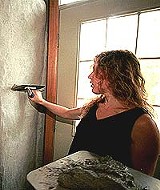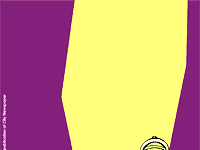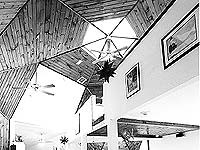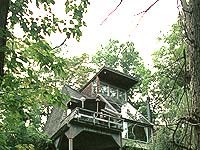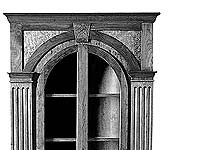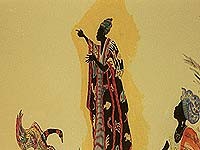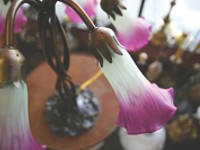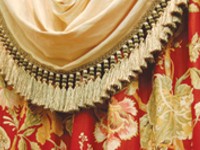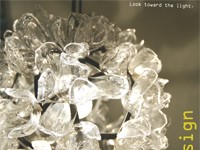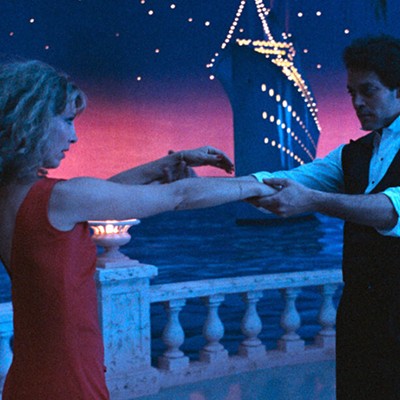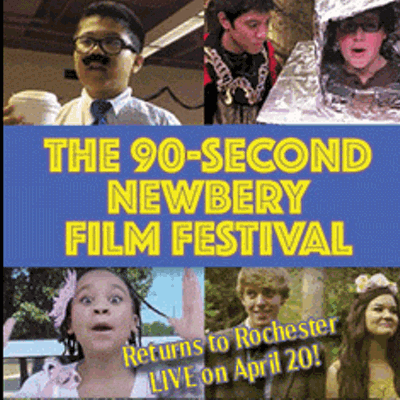[
{
"name": "500x250 Ad",
"insertPoint": "5",
"component": "15667920",
"parentWrapperClass": "",
"requiredCountToDisplay": "1"
}
]
If you tell Sharon Kissack her house smells like a barn, she won't be insulted. She's in the final stages of installing straw-bale walls inside, and the scent of sweet, dry hay is just one of the advantages of her unusual choice of materials. Another is the cozy feeling the two-foot-deep walls impart to the rooms --- every windowsill can accommodate a window seat. Undulating edges and curving corners replace the sharp geometry of standard homes.
When Kissack, who is an artist and a writer, and her husband Barry, an optometrist, built this house in the village of Honeoye Falls a couple of years ago, they wanted to evoke the adobe architecture of New Mexico, where they had lived for eight years. "I just love adobe architecture. It feels enveloping, nurturing, and natural," Kissack says. "Straw bales are the closest you can come to that feeling."
She's getting help from Mary Golden of Gaiatecture Design, a local architectural company that specializes in earthen plastering, a process used in straw-bale construction.
"With straw bales, there's a harmony with nature," Golden says, noting the connection between the earthy textures inside and the natural world right outside the window. "There's a balance. It's cozy."
Golden and Kissack are plastering the walls, a process that uses chopped straw, clay, sand, and water to smooth and seal the bales. It's messy, but it's also really fun, the two women say. With buckets of toffee-colored clay and brown silt at their feet, they brush on a golden plaster mixture that, when the light is right, sparkles.
"This is a special clay from La Madera, New Mexico," Golden explains. "It's full of mica --- it comes out of the ground like this," she says, rubbing it onto my hand. The clay is creamy and iridescent --- just like that shimmering blush teens buy at cosmetic counters to spread on their shoulders and cheeks.
"This stuff is wonderful," Golden exclaims, running her hand up and down a wall. "If you rub it on the walls with your hands, the oils in your skin bring the mica and bits of straw to the surface."
Kissack would have built a true straw-bale house --- one with bale-hay walls inside and out --- but she wanted to be sensitive to the historic architecture of the village of Honeoye Falls. Instead, she used stick construction to build a home that "looks like an old barn converted into a house," she says. It's worked out just fine, she says, to add straw bales to several of the walls inside.
Straw-bale houses made their first appearance in the United States in the 1890s in Nebraska, Kissack says. Affordable, easy to construct, and insulated, straw-bale structures appealed to pioneers who faced lumber shortages.
Bale-hay construction has continued to lure builders who appreciate their low-cost and high R-value. The R-value, or insulation value, can be R-30 or higher, compared to roughly R-19 for a standard wall with six inches of insulation, Kissack says. The rooms where she has two or more straw-bale walls stay cool in the summer and warm in the winter, Kissack says.
Two curving, bulging walls envelope one corner of a snug guest room on the first floor, where clay from a local quarry coats the bales. The slate gray clay has transformed the walls into rock-like surfaces.
"It feels good to me," Kissack says. Perhaps, she says, because it "goes back to our old caveman days."
In This Guide...
Latest in Home Design
More by Jennifer Loviglio
-
The XX Files
Nov 15, 2006 -

Silent (politically correct) night
Nov 15, 2006 -
Escape to Jennitopia
Nov 1, 2006 - More »
